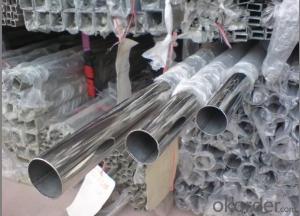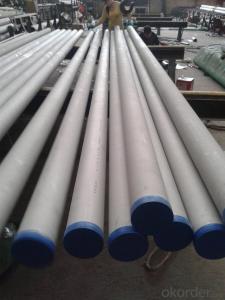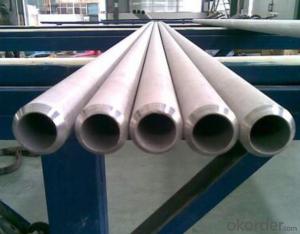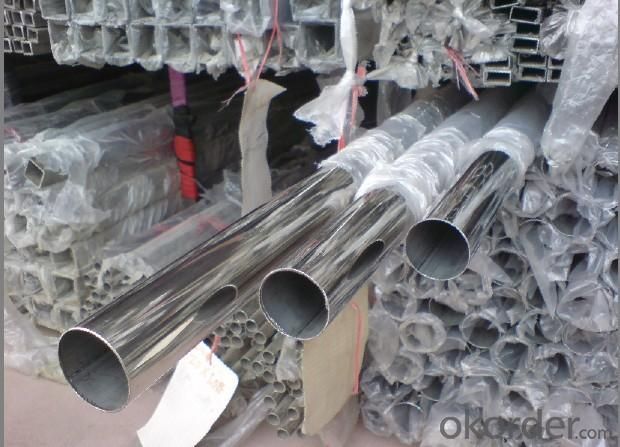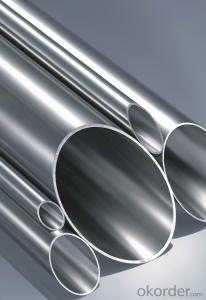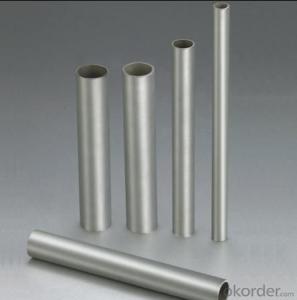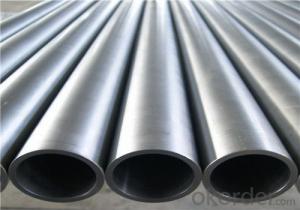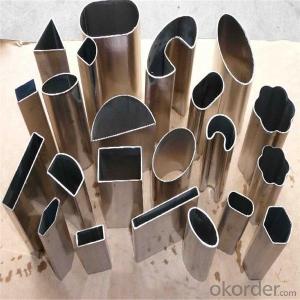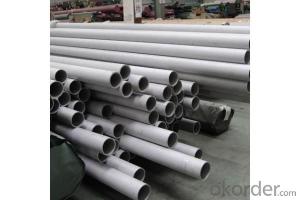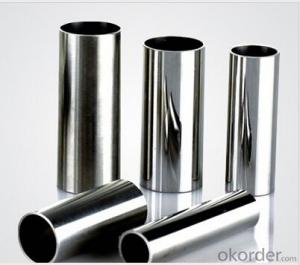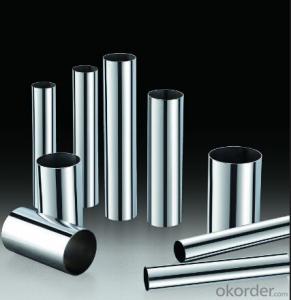Stainless Steel Seamless Steel Tube 304, 316 for Construction
- Loading Port:
- China main port
- Payment Terms:
- TT or LC
- Min Order Qty:
- 50 m.t.
- Supply Capability:
- 10000 m.t./month
OKorder Service Pledge
OKorder Financial Service
You Might Also Like
Product Description:
OKorder is offering Hot Rolled Low Carbon Steel Wire Rods for Nails, Steel Wire Mesh at great prices with worldwide shipping. Our supplier is a world-class manufacturer of steel, with our products utilized the world over. OKorder annually supplies products to African, South American and Asian markets. We provide quotations within 24 hours of receiving an inquiry and guarantee competitive prices.
Product Applications:
Hot Rolled Low Carbon Steel Wire Rods for Nails, Steel Wire Mesh are ideal for structural applications and are widely used in construction and manufacturing. Carbon steel wire rod is mainly used for reinforcement of reinforced concrete and welded structure or reprocessed (roberts , nail, etc.) materials, especially used to produce wire drawing, welding electrode, nails, spring, electronic, precise machinery parts and so on.
Product Advantages:
OKorder's Hot Rolled Low Carbon Steel Wire Rods for Nails, Steel Wire Mesh are durable, strong, and wide variety of sizes. They are newly produced by good quality steel billets.
Main Product Features:
· Premium quality
· Prompt delivery & seaworthy packing (30 days after receiving deposit)
· Can be recycled and reused
· Mill test certification
· Professional Service
· Competitive pricing
Product Specifications:
Steel Grade: SAE1006-1018B
Standard: ASTM, GB
Diameter: 5.5mm, 6.5mm, 7mm,8mm,9mm,10mm,12mm,14mm
Type: in coil, coil weight around 2MT
Alloy or Not: Alloy
Technique: Hot Rolled
Place of Origin: China Mainland
Surface: round, no twisted, light and smooth
FAQ:
Q1: Why buy Hot Rolled Low Carbon Steel Wire Rods for Nails, Steel Wire Mesh from OKorder.com?
A1: All products offered byOKorder.com are carefully selected from China's most reliable manufacturing enterprises. Through its ISO certifications, OKorder.com adheres to the highest standards and a commitment to supply chain safety and customer satisfaction.
Q2: How do we guarantee the quality of our products?
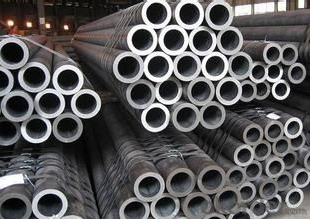
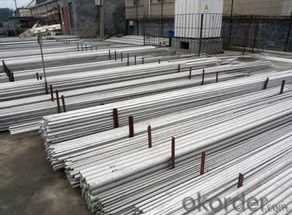
- Q: Can stainless steel pipes be used for underground drainage systems?
- Yes, stainless steel pipes can be used for underground drainage systems. Stainless steel is durable, corrosion-resistant, and can withstand the harsh underground conditions, making it a suitable choice for underground drainage systems.
- Q: Can stainless steel pipes be used for irrigation systems?
- Indeed, irrigation systems can utilize stainless steel pipes. Stainless steel boasts exceptional corrosion resistance, rendering it a prime selection for water-related purposes. It can endure the demanding conditions inherent in irrigation systems, such as chemical exposure, fertilizers, and fluctuating temperatures. Moreover, stainless steel pipes exhibit durability and possess a lengthy lifespan, guaranteeing the irrigation system's longevity. Furthermore, they deliver superb flow rates and can withstand high-pressure water without experiencing leakage or harm. Consequently, stainless steel pipes represent a dependable and effective choice for irrigation systems.
- Q: Can stainless steel pipes be used for pulp and paper industries?
- Stainless steel pipes are indeed applicable for use in the pulp and paper sectors. Due to their remarkable resistance against corrosion and abrasion, these pipes are well-suited for the tough and corrosive environments commonly found in pulp and paper mills. They are capable of enduring the corrosive chemicals and high temperatures associated with the production process, ensuring the piping system's longevity and reliability. Moreover, stainless steel pipes possess exceptional mechanical properties, such as high tensile strength and resistance to stress corrosion cracking. These qualities are crucial for the efficient transportation of fluids and gases within the pulp and paper industry. Overall, stainless steel pipes provide a durable, hygienic, and cost-effective solution for fulfilling piping requirements in the pulp and paper sectors.
- Q: Can stainless steel pipes be used for drinking water supply?
- Certainly! For drinking water supply, stainless steel pipes are a viable option. Being a remarkably sturdy and corrosion-resistant substance, stainless steel proves to be an appropriate selection for securely and hygienically conveying drinking water. Unlike alternative materials, stainless steel pipes refrain from releasing detrimental chemicals or impurities into the water, thereby preserving its quality and purity. Moreover, stainless steel pipes possess resistance against bacterial proliferation, thereby enhancing the safety of the drinking water.
- Q: What is the difference between 304N and 304LN stainless steel pipes?
- The chemical composition and presence of nitrogen are what distinguish 304N and 304LN stainless steel pipes. Comparatively, 304N stainless steel pipes contain a higher nitrogen concentration than 304LN stainless steel pipes. This nitrogen infusion enhances the stainless steel's durability and ability to withstand corrosion, rendering it more appropriate for use in demanding or corrosive environments. The heightened nitrogen levels in 304N stainless steel pipes result in improved overall performance in terms of strength, hardness, and resistance to pitting and crevice corrosion. Conversely, 304LN stainless steel pipes possess a lower nitrogen content but retain excellent corrosion resistance properties. These pipes are specifically engineered for use in low-temperature applications that require toughness. The reduced nitrogen content in 304LN stainless steel pipes ensures good weldability and formability, making them suitable for various fabrication processes. In conclusion, the disparity between 304N and 304LN stainless steel pipes lies in their nitrogen content, which impacts their strength, corrosion resistance, and suitability for diverse applications.
- Q: 304 stainless steel tube with the diameter of 25*2-3 is what mean
- 304 stainless steel tube with the diameter of 25*2-3 said: material for 304 (the equivalent of the American brand, Chinese numbered S30408 stainless steel or 06Cr19Ni10 stainless steel), diameter (OD) for 25mm, for the seamless steel pipe wall thickness of 2 to 3mm.
- Q: Mirror stainless steel tube 60*60 how much is one meter?
- Examples are stainless steel 63 round tubes, solid thickness 0.82 stainless steel tubes, single support 6 meters long, weight (63-0.82) *0.82*0.02491*6=7.62kg, a six meter long 63 round tube, thickness 0.82, theoretical weight is 7.62kg;
- Q: Can stainless steel pipes be insulated?
- Yes, stainless steel pipes can be insulated. Insulation is commonly used on pipes to prevent heat loss or gain, and stainless steel pipes are no exception. Insulating stainless steel pipes can provide several benefits, such as reducing energy costs, preventing condensation, and maintaining the temperature of the fluid inside the pipe. Various types of insulation materials, such as fiberglass, foam, or mineral wool, can be used to insulate stainless steel pipes, depending on the specific requirements of the application. Insulating stainless steel pipes is a common practice in industries such as oil and gas, chemical processing, and HVAC systems.
- Q: What is the difference between seamless and welded stainless steel pipes?
- The manufacturing process and resulting characteristics are what set seamless and welded stainless steel pipes apart. Seamless pipes are made by piercing a solid billet or ingot, heating it to a high temperature, and then rolling it into a hollow cylindrical shape. This ensures a smooth and uniform surface with no seams or joints. Seamless pipes are known for their higher strength and better corrosion resistance compared to welded pipes. They are the preferred choice for applications involving high pressure or temperature, as their seamless nature makes them more reliable and less prone to leaks. On the other hand, welded pipes are created by joining two or more pieces of steel using different welding techniques. This process introduces a seam or weld line along the length of the pipe. Welded pipes can be produced continuously or intermittently, depending on the specifications required. Although they may have slightly lower strength and corrosion resistance than seamless pipes, advancements in welding technology have greatly improved their quality and performance. Welded pipes are generally more cost-effective and commonly used in applications with lower pressure or temperature requirements. In conclusion, the differences between seamless and welded stainless steel pipes stem from their manufacturing processes and resulting characteristics. Seamless pipes offer higher strength, better corrosion resistance, and are preferred for high-pressure or temperature applications. Welded pipes are more cost-effective, commonly used for lower-pressure or temperature applications, and have seen significant enhancements in quality and performance. Ultimately, the choice of pipe type depends on the specific needs of the application and cost considerations.
- Q: What is the difference between 304J1 and 316J1 stainless steel pipes?
- The chemical composition and presence of certain elements distinguish 304J1 stainless steel pipes from 316J1 stainless steel pipes. 304J1 stainless steel is a variation of the well-known 304 stainless steel grade. It possesses a lower carbon content than regular 304, granting it increased resistance to intergranular corrosion. This is achieved by incorporating a small amount of titanium into the composition. 304J1 stainless steel pipes are suitable for a wide range of applications, including plumbing, food processing, and architectural uses. On the other hand, 316J1 stainless steel is a variation of the 316 stainless steel grade. It shares similarities with regular 316 stainless steel in terms of corrosion resistance, but it has a lower carbon content, similar to 304J1. Additionally, 316J1 contains a small amount of molybdenum, which enhances its resistance to pitting and crevice corrosion in chloride environments. As a result, 316J1 stainless steel pipes are commonly employed in marine environments, chemical processing plants, and other scenarios where exposure to corrosive substances is anticipated. To summarize, the primary disparity between 304J1 and 316J1 stainless steel pipes lies in their chemical composition, with the latter offering superior corrosion resistance in more aggressive environments. The selection between the two would hinge on the specific application and the desired level of corrosion resistance.
Send your message to us
Stainless Steel Seamless Steel Tube 304, 316 for Construction
- Loading Port:
- China main port
- Payment Terms:
- TT or LC
- Min Order Qty:
- 50 m.t.
- Supply Capability:
- 10000 m.t./month
OKorder Service Pledge
OKorder Financial Service
Similar products
Hot products
Hot Searches
Related keywords
